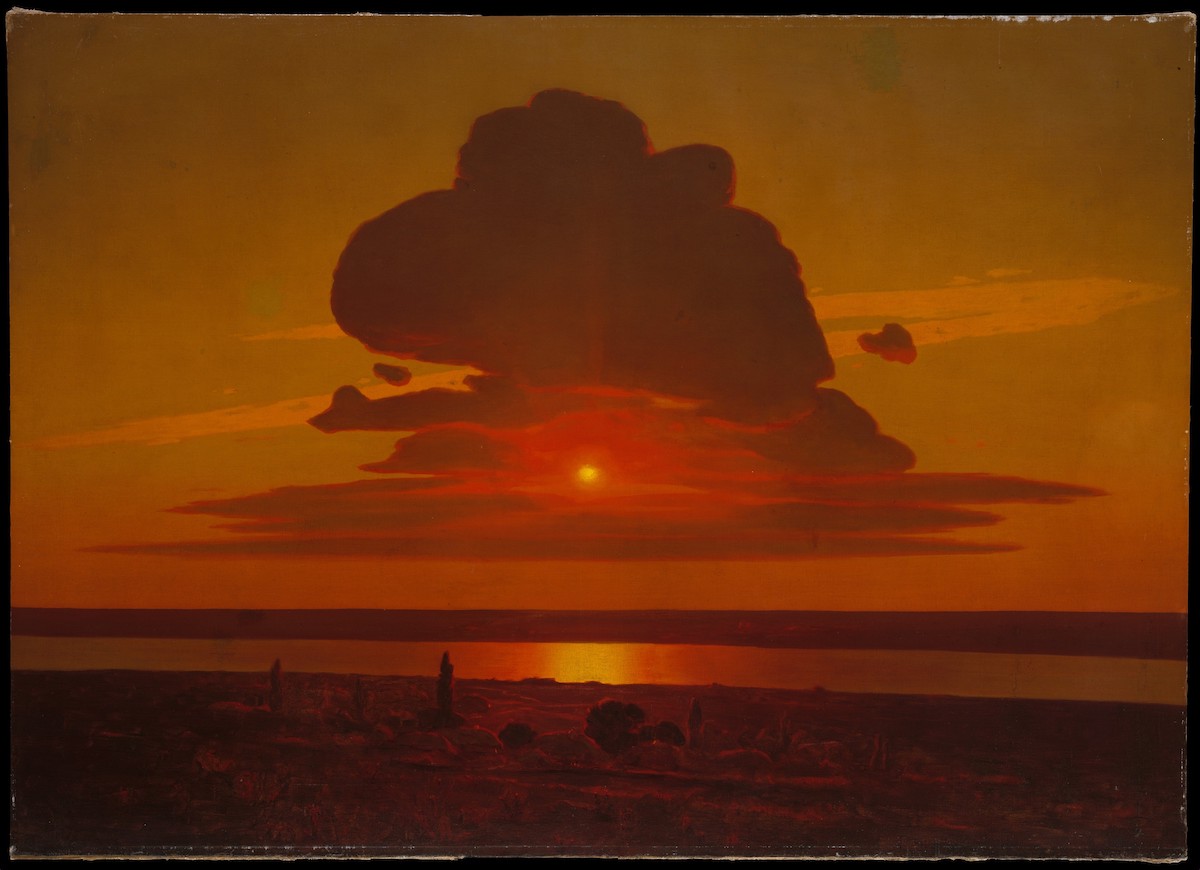
After facing pressure online, the Metropolitan Museum of Art in New York has changed the wall text for at least three artists who were formerly labeled as Russians. Those painters are now classified as Ukrainians, and the wall text for one of their works has been amended to mention the destruction of cultural property in the country by Russian troops.
The three artists—Ivan Aivazovsky, Arkhyp Kuindzhi and Ilya Repin—were all active during the 19th century. Depending on the institution, they have been labeled as either Russian or Ukrainian, given their movements over the course of their careers and the redrawing of both countries’ borders.
“The Met continually researches and examines objects in its collection in order to determine the most appropriate and accurate way to catalogue and present them,” a Met spokesperson told ARTnews. “The cataloguing of these works has been updated following research conducted in collaboration with scholars in the field.”
Kuindzhi, for example, was born in Mariupolsky Uyezd in the Yekaterinoslav Governorate, a subdivision of the Russian Empire. That means he was born in the area of what is now the city of Mariupol, Ukraine.
Online, there has been a push to classify artists like Kuindzhi as Ukrainians. The Twitter account Ukrainian Art History, which is run by the art historian Oksana Semenik, has been particularly active in that regard.
In January, the account posted a thread about why Kuindzhi should be considered a Ukrainian artist that has received more than 1,400 likes. “All his famous landscapes were about Ukraine, Dnipro, and steppes,” one tweet in it reads. “But also about Ukrainian people.” It closed out with a mention of Kuindzhi’s Red Sunset (1905–08), featuring a blazing sunset over the Dnipro River in Ukraine, and noted that the Met at the time labeled him a Russian.
Now, the Met clearly calls Kuindzhi a Ukrainian and a new sentence has been added to the wall text for Red Sunset that reads, “In March 2022, the Kuindzhi Art Museum in Mariupol, Ukraine, was destroyed in a Russian airstrike.”
Repin, who was born in the formerly Russian town of Chuhuiv, in what is now Ukraine, is also now labeled a Ukrainian artist. Aivazovsky, who was born in Feodosia, Crimea, when it was still part of the Russian Empire, is also considered a Ukrainian by the Met, too. Ukraine has said works by him that are held within the country have been looted by Russian troops since the start of the current war in 2022.
Some of this classification has been contentious in the past. After the Russian occupation of Crimea in 2014, both Russia and Ukraine made attempts to claim Aivazovsky as one of their own. Still, as the Agence France-Presse noted in 2017, many continued to consider Aivazovsky as Russian at the time.
Aivazovsky continues to be labeled differently depending on the institution and the country. The National Gallery of Armenia calls him an Armenian (he was born to an Armenian family), the State Tretyakov Gallery in Moscow has labeled him a Russian, and Ukrainian politicians have recently maintained that he was Ukrainian.
The start of the war in Ukraine has moved certain institutions to reconsider how artworks dealing with Russian and Ukrainian heritage are discussed. The National Gallery in London changed the label of a ca. 1899 Edgar Degas painting formerly titled Russian Dancers to now read Ukrainian Dancers following online pushback. The Met has also quietly retitled a similarly named Degas drawing from the same body of work. Formerly billed as Russian Dancer, it is now called Dancer in Ukrainian Dress. The museum does, however, own another Degas drawing that is still titled Russian Dancer.
Shifts such as that one are meant to account for what Ukrainian historian Olesya Khromeychuk once called “deliberate or just lazy misinterpretation of the region as one endless Russia.”
Semenik, the founder of the Ukrainian Art History Twitter account, greeted the news of Met’s reclassifications with pleasure, writing of the Kuindzhi one, on Facebook, “Now this is some incredible news.”

